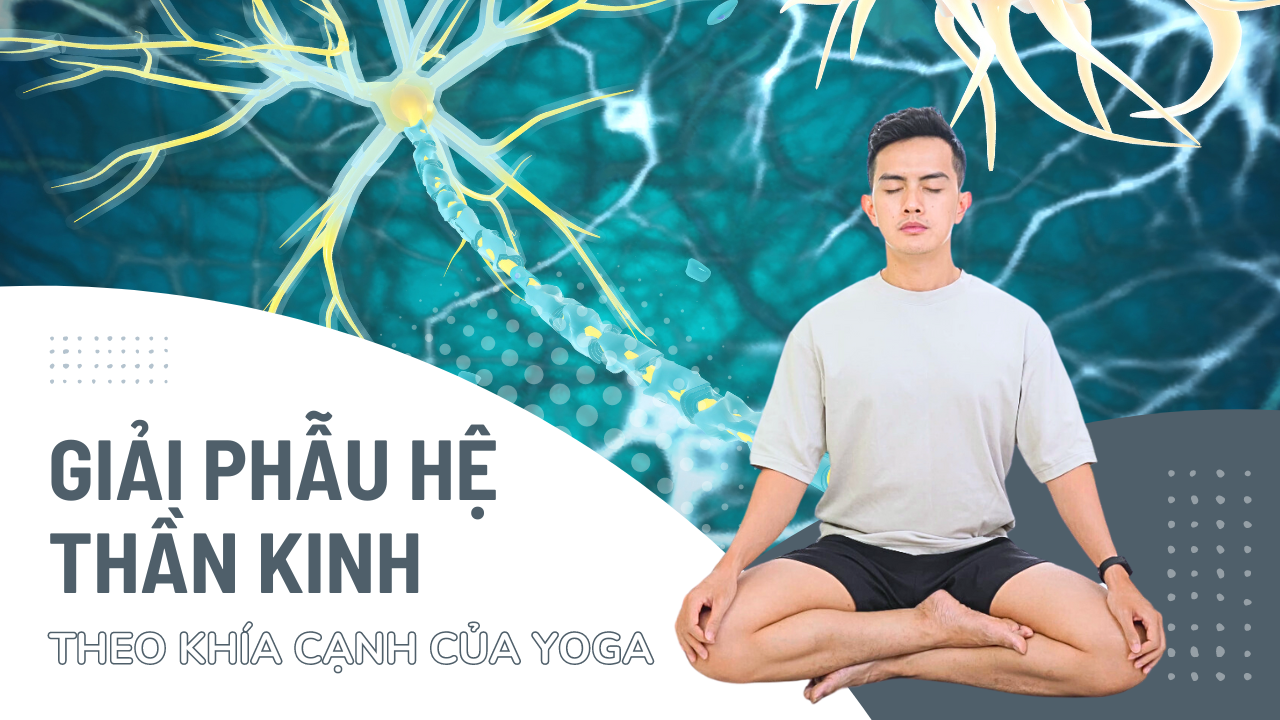Toughness and flexibility are two important factors to determine a good health and joint system. In this article, we are going to explore the benefits of increasing body flexibility and endurance. At the same time, Nguyen will guide you The most popular yoga poses for flexibility, raise these two important elements in the spine, hips, ligaments for you.
Why is flexibility and resilience important?
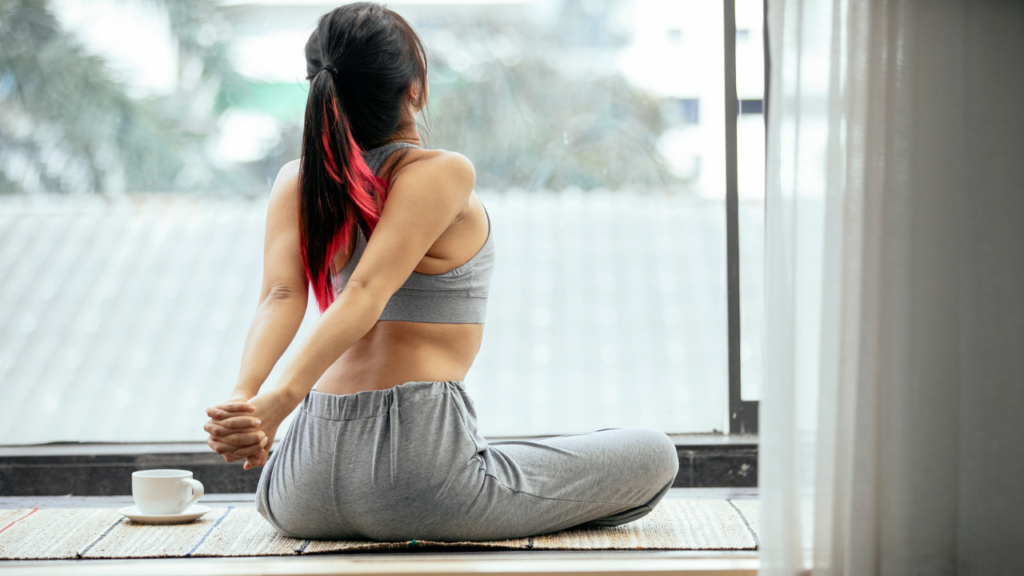
Although achieving flexibility is a difficult journey, it brings a lot of benefits to the body as follows:
- Greater range of motion: Makes it easier to move your joints in the normal direction more easily.
- Posture becomes more beautiful: Flexibility helps reduce muscle tension and shape a more suitable posture.
- Effective body pain relief: When your muscles are stretched, it reduces pressure on certain parts of your body. Therefore, you will have less lower back pain, neck and shoulder pain.
- Lower risk of injury: Greater strength or flexibility in muscles and joints can help you suffer less ligament injury than.
- Less pressure: When the tension in your muscles is released, it can help you feel more relaxed.
- Improves blood circulation: Better blood flow can help your muscles recover faster after a workout and also prevent stiffness.
7 yoga movements to help the body be flexible and supple
1. Butterfly Yoga Pose
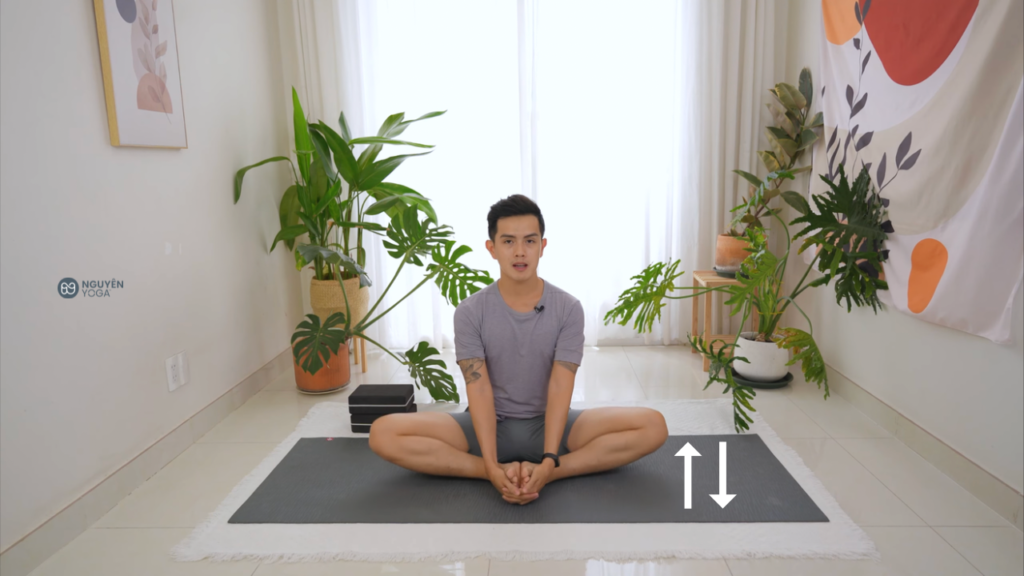
- Knit the soles of your feet, then knit your hands under your feet.
- Keep your back straight and gently tap your knees up and down.
- Breathe evenly and incorporate foot beats for 5 breaths.
2. Table Yoga Pose combined with Cat and Cow pose
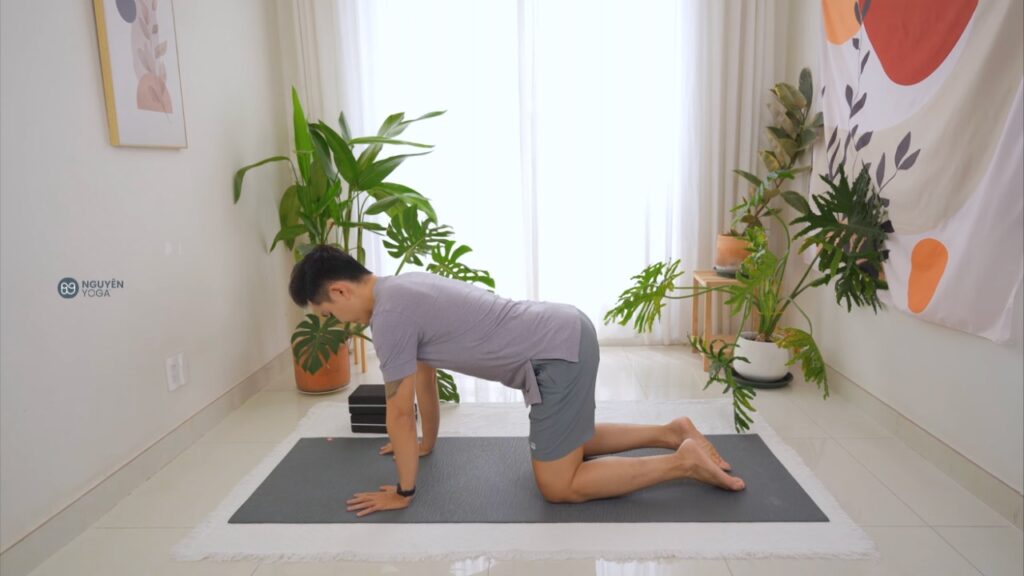
- Start from Table Pose. Both knees are shoulder width apart.
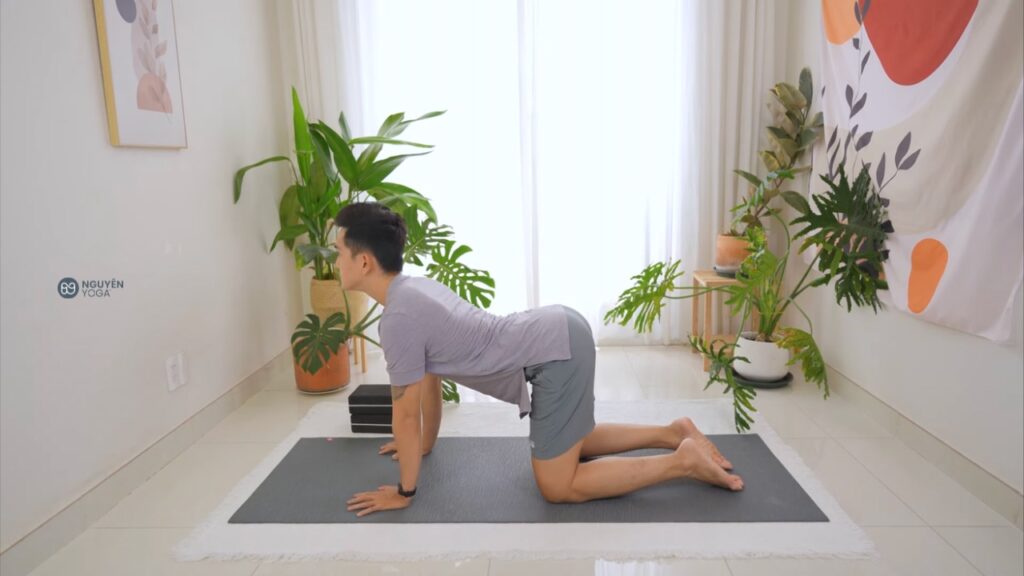
- Inhale, lower your chest, arch your back, lift your chin to look up.
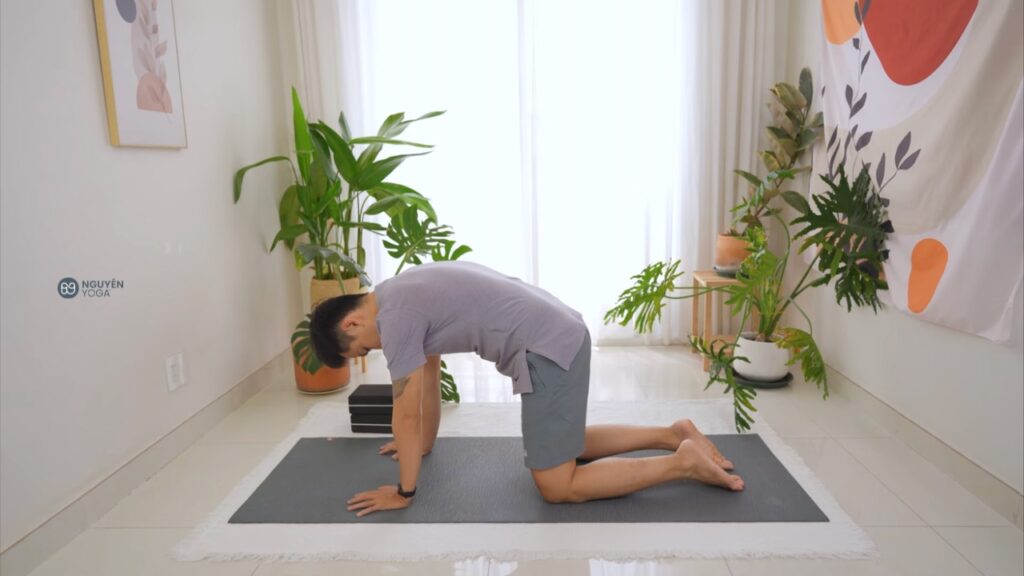
- Exhale, curl your back and chest up.
- Repeat the movement 5 times.
3. Yoga posture stretches the chest
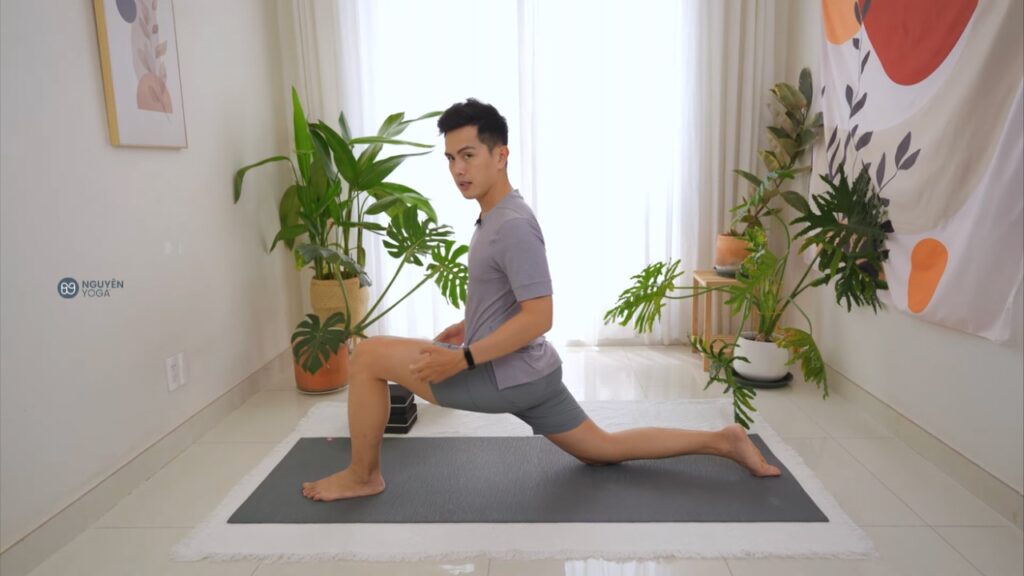
- Step right foot forward and left foot backward. Press the groin deeply forward.

- Lower your right arm to the side or back slightly. Reach your left hand up and stretch your left breast to the side.
- Hold and breathe evenly for 5 breaths. If you cannot support your hands on the floor, you can use Yoga bricks, or stacks of notebooks to support.
- Do the same with the other side.
4. Yoga poses to stretch leg ligaments
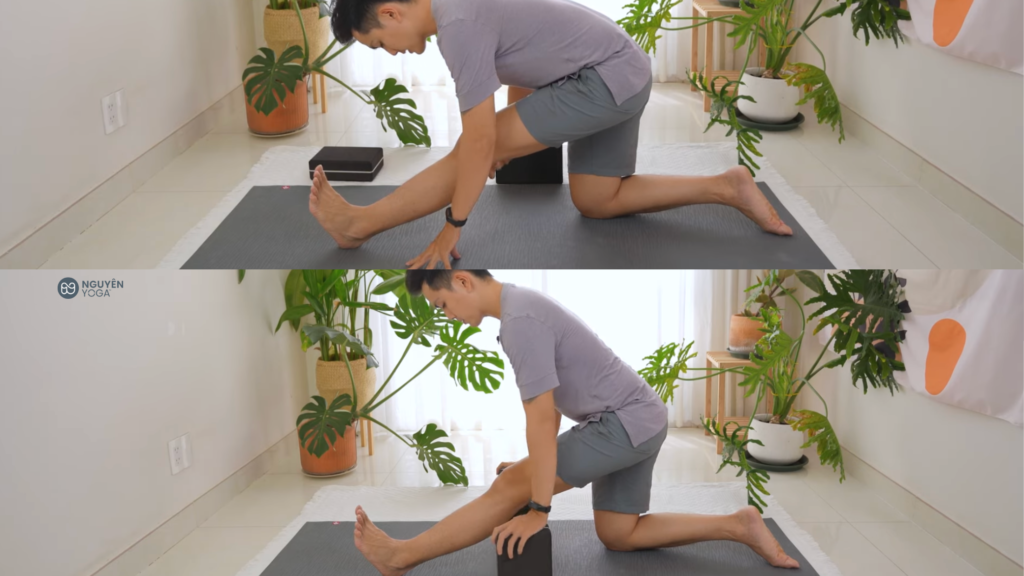
- Push hips back, straighten right leg. Bend forward to stretch right leg ligaments.
- Breathe in evenly for 5 breaths.
- Be careful not to bend your knees. And if your hands can't support them under the mat, you can prop them up on your right foot or with bricks on either side of the Yoga tiles (or chairs).
- Do the same with the other side.
5. Yoga poses in a standing pose
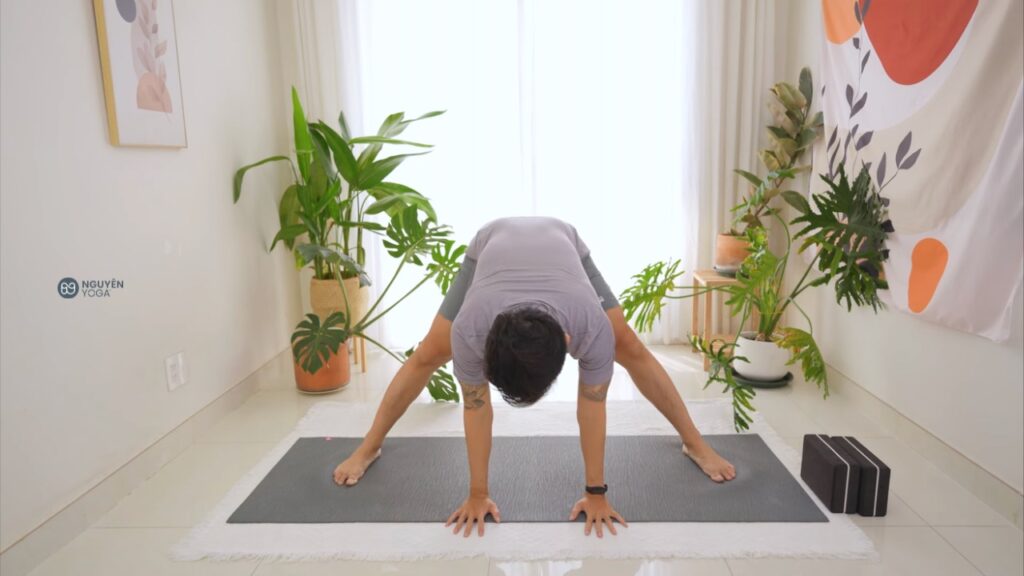
- With feet shoulder width apart, bend forward and lower your arms to the ground.
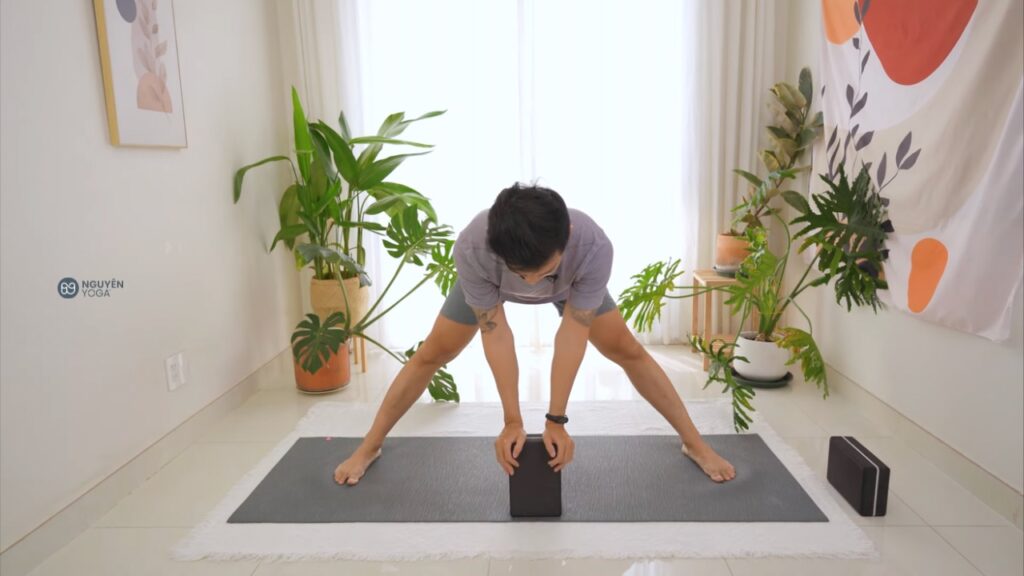
- If you can't touch the ground with your hands, you can use Yoga bricks.
- Hold and breathe evenly for 5 breaths.
6. Squat Yoga Pose combined with Frog Pose
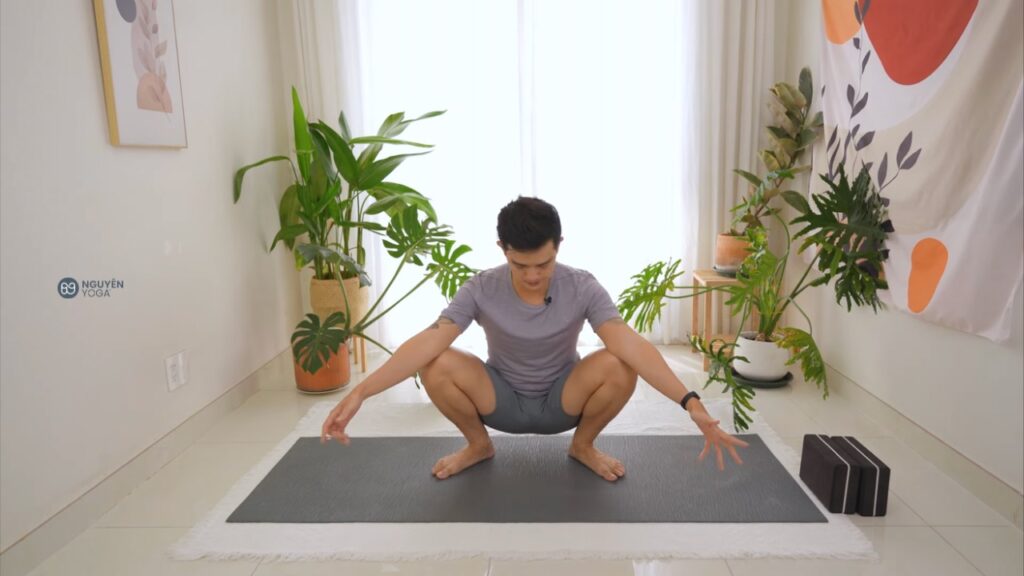
- Start in a squat position.
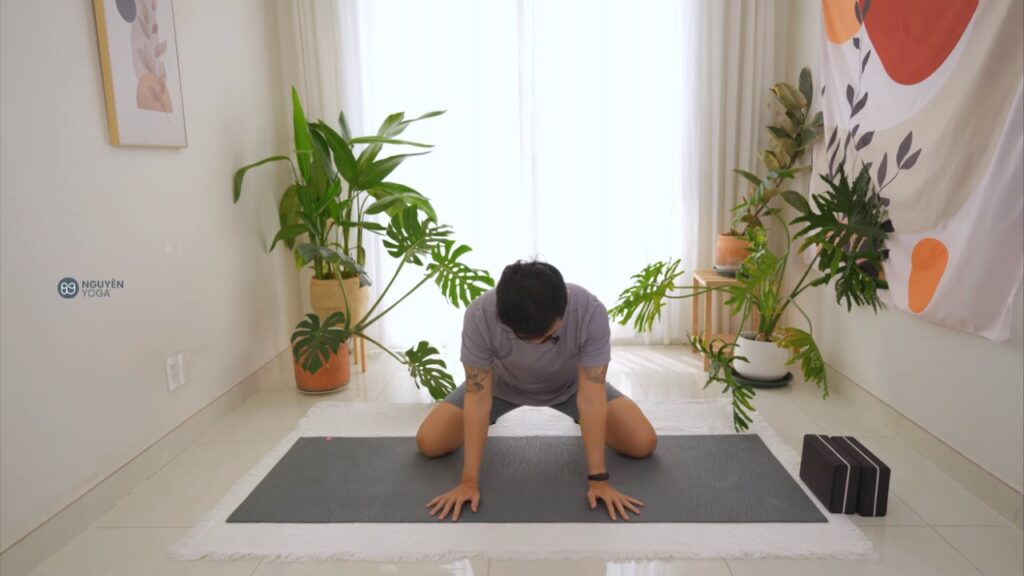
- Lower and separate your knees outward (as far as you can).
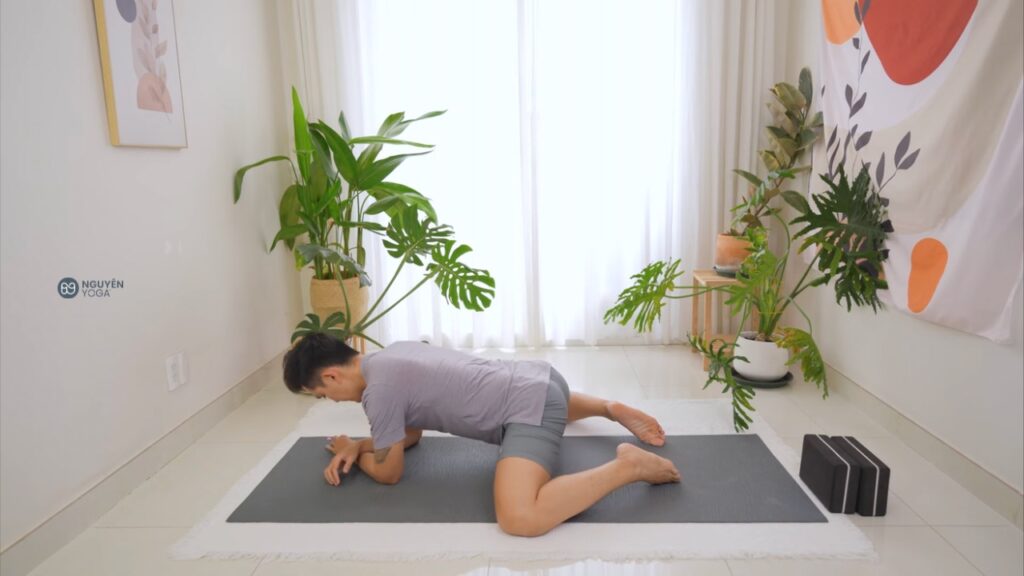
- Keeping your knees and hips level, lean forward and lower. (can be straight arm or down forearm).
- Hold and breathe evenly for 5 breaths.
7. Horizontal Split Yoga Pose
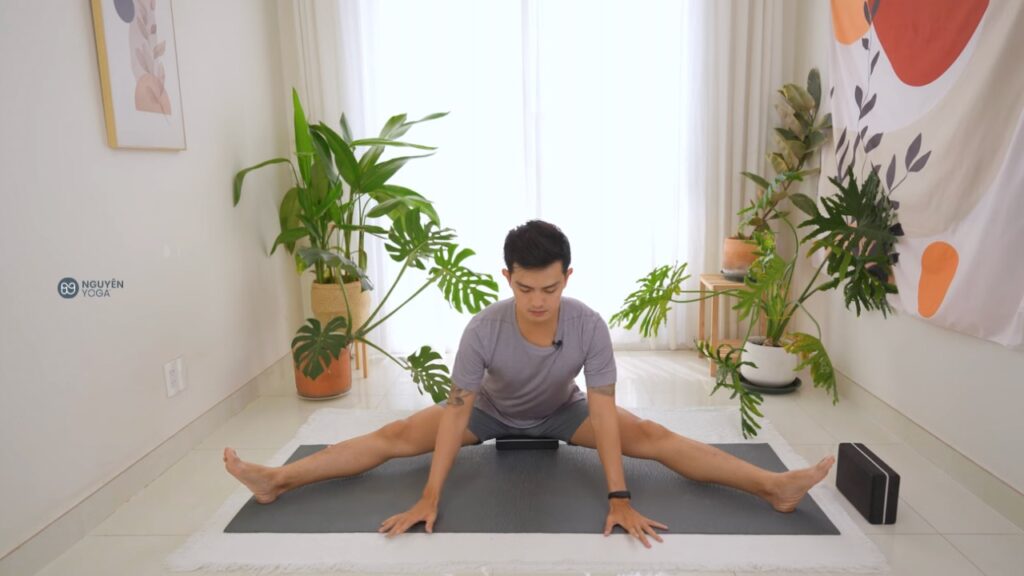
- Extend your legs (width appropriate for your body).
- Keep your back straight and your body not to fall backwards. Then you can sit on a Yoga brick or anything of the right height to make it easier to bend forward.
- Inhale deeply and gently bend forward until you feel a stretch in the ligaments.
- Hold and breathe evenly for 5 breaths.
Nguyen hopes that the above sharing will help your body become supple and flexible than! In addition, Nguyen also has many posts on health and endurance yoga. Everyone please support and look forward to Nguyen in the near future!
References
YOGA FOR FLEXIBILITY: 9 BEST YOGA POSES TO BECOME MORE FLEXIBLE



